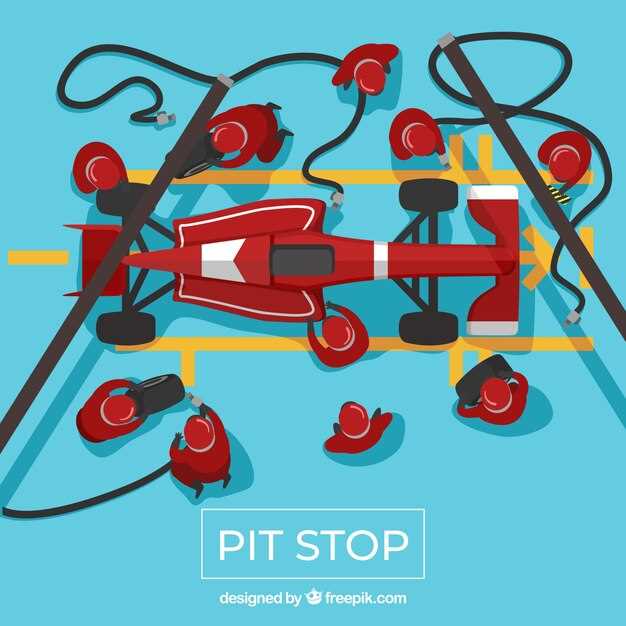
Aerodynamics plays a crucial role in the performance of race cars, influencing their speed, stability, and overall effectiveness on the track. One of the key aspects of aerodynamics is downforce, which refers to the vertical force exerted on a car due to the aerodynamic shape of its body and components. By increasing downforce, race cars can improve their grip on the track, allowing for higher cornering speeds and better handling characteristics.
The relationship between downforce and drag is a delicate balance that engineers must navigate. As downforce increases, drag may also rise, which can negatively affect straight-line speed. Therefore, optimizing the aerodynamic design of a race car is essential to enhance performance without sacrificing speed. This intricate dance between downforce and drag is fundamental in the quest for racing supremacy.
Furthermore, the design elements that generate downforce–such as wings, splitters, and vents–are meticulously engineered to create air flows that stabilize the car at high speeds. Understanding these aerodynamic principles is key for teams looking to gain a competitive edge, as even small improvements in downforce can result in significant performance gains on the racetrack.
How Downforce Enhances Tire Grip at High Speeds

Downforce is a crucial aspect of race car aerodynamics that significantly improves tire grip, particularly at high speeds. As a vehicle accelerates, the aerodynamic forces acting on it change, affecting its stability and cornering capabilities. When a race car is designed with effective downforce-generating elements, such as wings and diffusers, it can enhance traction, allowing for better performance on the track.
At elevated speeds, the air flowing over the car creates negative pressure above the vehicle, pulling it downward toward the track surface. This increased contact force maximizes the interaction between the tires and the asphalt, enhancing grip. Enhanced grip is essential for maintaining control during sharp turns and high-speed straightaways, reducing the risk of losing traction and optimizing lap times.
Furthermore, the relationship between downforce and tire performance is influenced by several factors, including tire composition and temperature. As downforce increases tire load, it also raises the temperature within the tire, improving its coefficient of friction. However, this balance must be carefully managed, as excessive downforce can lead to tire degradation and reduced performance over time.
In essence, the integration of aerodynamic principles to boost downforce directly correlates with enhanced tire grip at high speeds, making it a fundamental element of race car design that teams leverage to achieve competitive advantages on the track.
The Role of Aerodynamic Shape in Reducing Drag
Aerodynamics plays a crucial role in determining the overall performance of a race car. The shape of a vehicle significantly affects its ability to cut through the air, influencing both downforce and drag. A well-designed aerodynamic profile can minimize drag, which is the resistance encountered by the car as it moves through the atmosphere.
To reduce drag, engineers focus on creating smooth, streamlined shapes that allow air to flow seamlessly around the vehicle. Features such as rounded edges, tapered bodies, and low-profile designs contribute to reducing turbulence, which is a primary cause of drag. Streamlined shapes enable the air to reattach smoothly to the surface of the car, thereby decreasing the wake effect behind the vehicle.
Furthermore, the integration of aerodynamic elements like splitters, wings, and diffusers not only enhances downforce but also helps manage airflow effectively. These components can redirect air and create a more favorable pressure differential, resulting in reduced drag under various racing conditions. The careful balancing of these elements is essential for achieving optimal aerodynamic efficiency.
Computational fluid dynamics (CFD) simulations and wind tunnel testing are indispensable tools used by engineers to analyze and refine the aerodynamic shapes of race cars. These technologies allow for the evaluation of different designs and their effects on drag and performance. By understanding airflow patterns and making informed design choices, teams can create vehicles that maintain higher speeds while consuming less power.
Ultimately, the role of aerodynamic shape in reducing drag is not just about speed; it also impacts fuel efficiency and tire wear. A car that effectively minimizes drag can maintain performance over longer periods without straining its engine or degrading its tires, making it more competitive in a race environment.
Analyzing the Effect of Airflow on Engine Cooling and Performance

Efficient airflow is crucial for maintaining optimal engine temperatures and enhancing overall performance in race cars. The design of a vehicle significantly influences how air circulates around and through the engine compartment, directly impacting cooling efficiency. As air flows through the race car, it assists in dissipating heat generated by the engine, which is vital for avoiding overheating and ensuring peak power output.
Downforce plays a significant role in airflow behavior around the vehicle. Increased downforce enhances the aerodynamics of the race car, allowing for better cornering speeds and stability. However, this can also lead to a reduction in airflow to certain areas, especially the engine bay, if not properly managed. Effective use of aerodynamic components such as vents, ducts, and strategically placed wings ensures that while generating downforce, sufficient air is directed toward critical cooling components.
The placement of air intakes is instrumental in optimizing engine cooling. Intakes designed to channel high-speed air directly towards the engine facilitate efficient heat exchange by ensuring that cooler air enters the engine compartment. This not only helps in managing temperatures but also improves combustion efficiency, leading to enhanced performance.
Furthermore, airflow management can significantly impact turbocharged or supercharged engines. These engines generate excessive heat, making effective cooling systems even more critical. By utilizing aerodynamic enhancements to maintain a consistent flow of air, race teams can ensure that their engines operate efficiently, significantly improving throttle response and overall power output.
In conclusion, understanding and optimizing airflow is vital for maintaining engine cooling and performance in race cars. By balancing downforce generation with effective cooling strategies, teams can achieve competitive advantages on the track, enabling better performance while mitigating the risk of engine-related failures.




